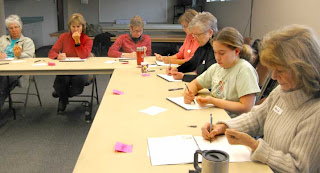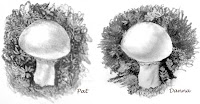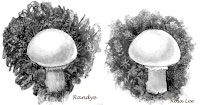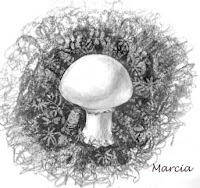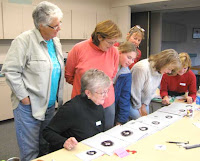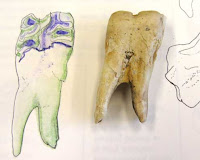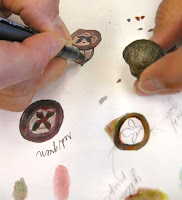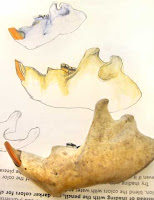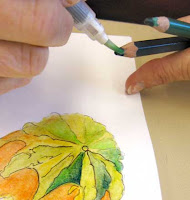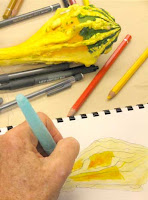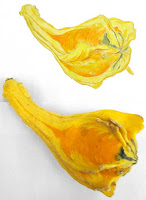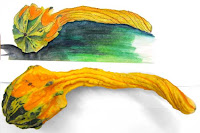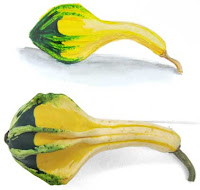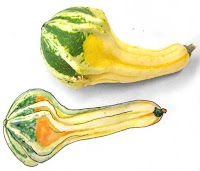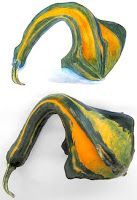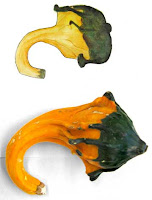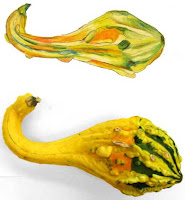 I didn't DREAM it would take this long to get my first two workshop workbooks reshaped into stand-alone books that you could use just like my workshops to learn how to draw and shade things so they look real! No idea!
I didn't DREAM it would take this long to get my first two workshop workbooks reshaped into stand-alone books that you could use just like my workshops to learn how to draw and shade things so they look real! No idea!But I finally have their webpages up and running on my website, and now you can download the first two: Nature Sketching Basics and Nature Sketching Details! Get through these two, you are up and running toward your dreams. And that's the best I can offer since I won't be offering workshops anymore.
WARNING!!!
 These are NOT actual books that will arrive in the mail ~ they're DOWNLOADS, for which you pay $9.95US with your credit card or PayPal, download, save to your computer hard-drive, open up in Adobe Acrobat, then immediately print out to use. Or you could use them straight from the monitor if you don't have a printer.
These are NOT actual books that will arrive in the mail ~ they're DOWNLOADS, for which you pay $9.95US with your credit card or PayPal, download, save to your computer hard-drive, open up in Adobe Acrobat, then immediately print out to use. Or you could use them straight from the monitor if you don't have a printer.The $9.95 is an introductory price only, and will be going up in a couple of weeks to $19.95, so act soon if you want to get this price.
Nature Sketching Basics is the key workbook, and even if you don't plan to get them all, you should probably plan to get this one as a base workbook because it lays the groundwork for all the rest.
That groundwork is important. In my real-time workshops, I would actually repeat the materials in the Basics workbook in every class before I would start on the new stuff, just to warm everyone up and get them "on the same page," but in the stand-alone workbooks you would probably feel gypped if the first quarter of each workbook was identical
 to every other one, so I lightly skip over the right-brain stuff and refer you back to Nature Sketching Basics (then I use that space in the workbooks to put in extra goodies that I didn't have room for in the real-time workshops).
to every other one, so I lightly skip over the right-brain stuff and refer you back to Nature Sketching Basics (then I use that space in the workbooks to put in extra goodies that I didn't have room for in the real-time workshops).I am SO DELIGHTED to get these workbooks up and running!
The revision is enormous. In my workshops I am there to
 introduce the wonderful right-brain process that gets my students off the ground and drawing in lickety-split time. I'm there to show you how to hold your pencil, how to knead an eraser, how to use the arc of your hand in drawing certain shapes. How to transfer what you see into doable pencil marks.
introduce the wonderful right-brain process that gets my students off the ground and drawing in lickety-split time. I'm there to show you how to hold your pencil, how to knead an eraser, how to use the arc of your hand in drawing certain shapes. How to transfer what you see into doable pencil marks.And I can show you how to critique your own work (via a conga line to the nearest restroom,
 with much giggling and eye-rolling).
with much giggling and eye-rolling).I can hover over your shoulder and point to places where line
 quality is perfect and where it needs more improvement. I can even hold your hand, if you want, to demonstrate the flick needed to bring off a perfect mouse whisker. And I can urge you along with a bit of sympathy or humor (whichever you need) when you hit a plateau.
quality is perfect and where it needs more improvement. I can even hold your hand, if you want, to demonstrate the flick needed to bring off a perfect mouse whisker. And I can urge you along with a bit of sympathy or humor (whichever you need) when you hit a plateau.So to take the place of that (not perfectly, but going a L-O-N-G way) I have added words: instructions and asides, caveats and encouragements, descriptions, insights and
 suggestions, tutorials and step-by-step demos, and I have scattered my innermost drawing secrets all over the place so that anyone can take advantage of my many years of experience.
suggestions, tutorials and step-by-step demos, and I have scattered my innermost drawing secrets all over the place so that anyone can take advantage of my many years of experience.There are a lot of illustrations and some projects in these workbooks that weren't in the ones that went with the class. And I had to add the tutorials to walk you through things I was able to quickly show on the blackboard or demonstrate for you before you tried them in the real-time workshops. The mouse, here, for instance.
In fact,
 every illustration I've included here, plus scads more, are in the new workbooks.
every illustration I've included here, plus scads more, are in the new workbooks.It's been exhausting. I am reamed out.
 But satisfied.
But satisfied.And I am recuperating, recharging to start the next workbook soon. They're going faster now that I have figured out the new format. But it will never really get speedy ~ after all, they ARE more than 20 pages long each ~ the workbook's webpage alone (plus jumping through the hoops to get it ready to download) takes a day or two to produce!
In
 my last post, on January 24, I was asking how y'all felt about my putting skulls into the workbook, and the response was unreservedly enthusiastic -- not a single nay-sayer. So they're in, but not in the first two workbooks -- they're in Sketching Wildlife Basics, which is nearly ready, too, and will be ready for downloading soon.
my last post, on January 24, I was asking how y'all felt about my putting skulls into the workbook, and the response was unreservedly enthusiastic -- not a single nay-sayer. So they're in, but not in the first two workbooks -- they're in Sketching Wildlife Basics, which is nearly ready, too, and will be ready for downloading soon.I'm taking an R&R week off. But then, which workbook would YOU like to see after Sketching Wildlife Basics? Your choices are:
- Natural Landscape Sketching Basics
- Nature Sketching with Watercolor Pencil
- Travel and Nature Journaling (both sketching and writing)
If you download and use one of my workbooks, I would really LOVE to hear from you as to how it works for you (good or bad, honest!), whether you would suggest any changes, additions, or deletions; and PLEASE, let me know if you find any booboos. I found one yesterday, just before uploading it to PayLoadz, a misplaced label that would have had you scratching your head (well, you'd have figured it out from the text, but it might have taken a minute).
Three cheers for the new workbooks!
Hip hip hooray!!!!


